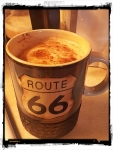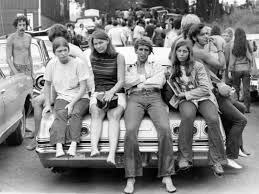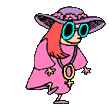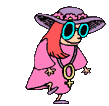CANNABIS CULTURE – The Grateful Dead has never really been a band as much as it’s been a culture that has to be experienced to be believed. The band’s latest incarnation, Furthur, continues the tradition and finds new ways to deconstruct and express their musical creativity.
 Furthur concert poster. (Click to enlarge)Cuthbert Ampitheater, Eugene Oregon – September 24, 2011
Furthur concert poster. (Click to enlarge)Cuthbert Ampitheater, Eugene Oregon – September 24, 2011
“The way things were going, I never would have expected to be here at this moment. This is the overtime round, and every gathering like this is a blessing. And the way the band is playing, you can tell they know that and they’re making every note count”
– Delirious elder Deadhead between sets
Who’d have thought that forty-six years after playing their first gig together, Bob Weir and Phil Lesh would still care so much about their music? It would have been forgivable if after so much time, their live show had ground down to a well-rehearsed routine or nothing more than a workmanlike celebration of their greatest hits; there are plenty of classic rock acts on the road that give their audiences just that and still manage to send them home happy.
But, simple crowd-pleasing has never been the forte of anyone associated with the Grateful Dead. From the very beginning, they’ve asked more than that from their audience. Being a Deadhead has always been more of a back and forth two-way conversation between the artists and fans. It’s never been simply about consuming pre-digested entertainment that can be carelessly disposed of and forgotten as easily as a fast food wrapper. There’s always been lots of gristle to ruminate over and chew on as the music Bob Weir and Phil Lesh are conjuring these days continues to demand so much of the listener. In the public imagination, The Grateful Dead may always remain as little more than a psychedelic band – a throwback to the summer of love who lull their soft-headed fans with utopian ballads about peace and contentment. Fortunately, that’s only the tip of the iceberg as anyone who’s followed the music’s nearly fifty year history knows. Songs like ‘Trucking’, ‘Ripple’ and ‘Uncle John’s Band’ are classics of the hippie era and still figure prominently in Furthur’s repertoire, but if that’s all that Jerry Garcia and company contributed to the history of music, it wouldn’t account for the dedication and diversity of the crowds that continue to gather and follow the band as it selectively tours around North America.
 A good show – Phil and Bob.By playing music that ranges from crass roadhouse boogie to covers of Marty Robbins country classics with generous doses of everything from techno to free jazz thrown into the mix, the Grateful Dead have always thrown a huge musical net. As risky and improbable as such a creative approach sounds, it’s paid off hugely over the years as their longevity certainly attests. When they’re on – as they were this last weekend in Eugene – it’s not much of a stretch to suggest that no one plays better than they do. To hear them navigate the elliptical twists and turns of “Estimated Prophet”, “Dark Star”, “Caution…” and “The Eleven” – some of the most challenging compositions in their repertoire – without flinching or hesitation should convince the most skeptical of music fans that the members of Furthur are at the absolute peak of their musical game. Furthur’s ferocious and eclectic approach to sound encourages the audience to listen – really listen – and engage with the hidden potential that rests inside of every song, no matter how many times they’ve heard them before.
A good show – Phil and Bob.By playing music that ranges from crass roadhouse boogie to covers of Marty Robbins country classics with generous doses of everything from techno to free jazz thrown into the mix, the Grateful Dead have always thrown a huge musical net. As risky and improbable as such a creative approach sounds, it’s paid off hugely over the years as their longevity certainly attests. When they’re on – as they were this last weekend in Eugene – it’s not much of a stretch to suggest that no one plays better than they do. To hear them navigate the elliptical twists and turns of “Estimated Prophet”, “Dark Star”, “Caution…” and “The Eleven” – some of the most challenging compositions in their repertoire – without flinching or hesitation should convince the most skeptical of music fans that the members of Furthur are at the absolute peak of their musical game. Furthur’s ferocious and eclectic approach to sound encourages the audience to listen – really listen – and engage with the hidden potential that rests inside of every song, no matter how many times they’ve heard them before.
Going to a Furthur show in 2011 might be more than a little overwhelming to the uninitiated because the Grateful Dead has never really been a band as much as it’s been a culture and an extended nomadic community of freaks and diverse individuals whose gatherings have a power and appeal that has to be experienced to be believed. A person parachuted into ground zero – the centre of the Furthur parking lot – during the band’s weekend stand in Eugene could be forgiven for wondering if they’d somehow been sent back in time to 1968 rather than the early fall of a year more than a decade into the new millennium. For to look around at the tie dyed buses, burrito kitchens, freak-out tents and spontaneous drum circles that were forming all over the property around the stadium, the atmosphere that was created felt more like Woodstock or a Rainbow gathering than anything one would expect to experience in contemporary America. Scantily clad young men and women wafted through the crowd holding huge kind buds, chocolate covered mushrooms and banners offering a variety of psychedelics and no one batted an eye. Baskets of hash brownies were passed through the throng of people gathering outside the gate. No one took more than their share. People who had taken too much of a substance were kindly escorted to a quiet place, supported by compassionate individuals who patiently talked them down. If there was another America somewhere outside of Eugene this weekend, it was a universe away and nobody here wanted to know about it.
 It may have been many years since any of the members of the Grateful Dead took any acid themselves, but the imprinting of the thousands upon thousands of trips they took left its mark on them many years ago. No one anywhere – to this day – can create a more psychedelic soundscape and environment than the members of Furthur when they’re on a roll. It’s a power they came by early and honestly as in their most embryonic form, back when they were called ‘The Warlocks’, Jerry Garcia and company served as the house band for Ken Kesey’s acid tests. Those early gigs, that often stretched out to eight hours or more, essentially unhinged their conception of what a song had to be as the crude blues and Beatles covers that once formed their set took on extra dimensions and dissolved into huge exploratory jams that mirrored the stages of the psychedelic experience.
It may have been many years since any of the members of the Grateful Dead took any acid themselves, but the imprinting of the thousands upon thousands of trips they took left its mark on them many years ago. No one anywhere – to this day – can create a more psychedelic soundscape and environment than the members of Furthur when they’re on a roll. It’s a power they came by early and honestly as in their most embryonic form, back when they were called ‘The Warlocks’, Jerry Garcia and company served as the house band for Ken Kesey’s acid tests. Those early gigs, that often stretched out to eight hours or more, essentially unhinged their conception of what a song had to be as the crude blues and Beatles covers that once formed their set took on extra dimensions and dissolved into huge exploratory jams that mirrored the stages of the psychedelic experience.
Acid and marijuana helped take down the gates imposed by the conformity of the fifties and the Grateful Dead – along with other Bay area outfits like Jefferson Airplane and Quicksilver Messenger Service – were happy to provide the soundtrack to the burgeoning Haight Ashbury scene that was influencing youth culture throughout the western world as the Sixties went on. A decade later, the hippie scene had all but faded as the culture moved into ‘the me decade’ and other musical forms from ‘prog rock’ to disco expressed the values of a new generation.
 Whatever changes were afoot during the ensuing decades didn’t seem to faze the Grateful Dead in the least. They continued to tour and record at a regular pace as they, somewhat bafflingly, continued to increase in popularity the further away the Sixties became. Their concerts were more like tribal gatherings or meetings of counter cultural survivors than rock concerts. The campsites and parking lots around a venue were like hippie retreats where a person could eat great vegetarian food, learn about sustainable agriculture, trade high quality pot seeds and score great acid. It’s a scene that was cherished by thousands upon thousands of musicians, political visionaries, spiritual advocates and eccentrics of all descriptions before the Grateful Dead suddenly retired their freak flags in the late summer of 1995 after the death of Jerry Garcia in August of that year. For many, ‘the long strange trip’ was over and real life loomed threateningly around the bend. But, again, you’d never have any inkling of that if you happened to drop right into the middle of the crazy throng of humanity that gathered to hear Furthur unleash the psychedelic beast lurking in the heart of their music in Eugene last September.
Whatever changes were afoot during the ensuing decades didn’t seem to faze the Grateful Dead in the least. They continued to tour and record at a regular pace as they, somewhat bafflingly, continued to increase in popularity the further away the Sixties became. Their concerts were more like tribal gatherings or meetings of counter cultural survivors than rock concerts. The campsites and parking lots around a venue were like hippie retreats where a person could eat great vegetarian food, learn about sustainable agriculture, trade high quality pot seeds and score great acid. It’s a scene that was cherished by thousands upon thousands of musicians, political visionaries, spiritual advocates and eccentrics of all descriptions before the Grateful Dead suddenly retired their freak flags in the late summer of 1995 after the death of Jerry Garcia in August of that year. For many, ‘the long strange trip’ was over and real life loomed threateningly around the bend. But, again, you’d never have any inkling of that if you happened to drop right into the middle of the crazy throng of humanity that gathered to hear Furthur unleash the psychedelic beast lurking in the heart of their music in Eugene last September.
At this moment in time, Furthur are undeniably on fire musically, and their loyal and sometimes long-suffering fans couldn’t be happier. Several times during Furthur’s weekend run in Eugene, people in the audience threw up their arms, hugged friends and wept with joy as if the band’s triumphs and redemptions mirrored their own.
The moment Lesh and Weir are experiencing now is one to savor as it hasn’t always been an easy ride being a member of the Grateful Dead. Since Garcia’s death, it’s safe to say that there have been a lot of bumpy patches and the moments of pure crystalline musical joy have at times seemed few and far between. The muse that channeled such sweet, complex and riveting sounds throughout a September weekend in Eugene has often been conspicuously absent in recent years, though it’s not been for lack of trying.
 Since Garcia’s death, the surviving members of the Grateful Dead have continued to experiment with playing music in many permeations and formations of their former group. The whole ensemble – with a revolving set of keyboard and guitar players – have toured as ‘The Other Ones’ and ‘The Dead’ on several occasions, and while each tour has had its share of interesting musical moments, the magic that characterized the Grateful Dead for so many years has often been in short supply. It’s been said that Jerry Garcia was the glue that held the whole group together and that the transcendent musical conversations that morphed between songs during live sets were really conversations that each member was having with Garcia. His death created a huge emotional and musical void, so it’s not really surprising that it took years for the others to find new approaches and creative territory to explore with each other.
Since Garcia’s death, the surviving members of the Grateful Dead have continued to experiment with playing music in many permeations and formations of their former group. The whole ensemble – with a revolving set of keyboard and guitar players – have toured as ‘The Other Ones’ and ‘The Dead’ on several occasions, and while each tour has had its share of interesting musical moments, the magic that characterized the Grateful Dead for so many years has often been in short supply. It’s been said that Jerry Garcia was the glue that held the whole group together and that the transcendent musical conversations that morphed between songs during live sets were really conversations that each member was having with Garcia. His death created a huge emotional and musical void, so it’s not really surprising that it took years for the others to find new approaches and creative territory to explore with each other.
The Dead tour of 2003 shook things up by adding R and B singer Joan Osborne into the mix with some very interesting results, but many of the band’s older fans found the young singer’s wailing and rapping hard to take. For their 2004 tour, they ditched Osborne, having little to offer in her stead. Acrimony and accusations marred the tour and for several years it appeared that it was all over as Lesh and Weir toured constantly with their own groups (Phil Lesh and Friends and Ratdog respectively). Percussionists Mickey Hart and Bill Kreutzmann intermittently played together as The Rhythm Devils while each cultivated their own groups, Planet Drum and The Trichomes as additional side projects. The surviving members convened again in 2009 for the Dead 09 tour which unfortunately – despite some great shows late in the tour – failed to create any new chemistry or memorable innovations when it came to interpreting The Grateful Dead’s old material. The Dead 09 tour ended inauspiciously as Lesh, Weir, Kreutzmann and Hart took up with their own bands again to tour without indicating any desire to play together again.
Rumbles of change began to be heard later that year as the news leaked out that Lesh and Weir had had a pow wow and expressed a desire to play together again. Both were apparently discouraged by the ‘restrictive format’ imposed by touring under the banner of ‘The Dead.’ Hart and Kreutzmann were not invited to participate in the new venture as the ‘drums’ section of the show as well as the improvisational ‘space’ sequence were central to the predictability that Lesh and Weir wanted to sidestep.
 Many in the Dead camp felt that the formation of Furthur was the last straw, the final coffin nail in what remained of the Sixties spirit and that their favourite musicians had finally lost the plot, plugging in their instruments to the twin amplifiers of greed and senility. Fans held their breath, a few gigs were played, and surprisingly the initial reports were good. By the time they swung through the northwest in the fall of 2010 for gigs in Oregon and Washington, the band was on fire. Focus and intensity had returned with a vengeance and skeptical listeners had to admit that the unmistakable Grateful Dead sound hadn’t been as robust and interesting in a long, long time.
Many in the Dead camp felt that the formation of Furthur was the last straw, the final coffin nail in what remained of the Sixties spirit and that their favourite musicians had finally lost the plot, plugging in their instruments to the twin amplifiers of greed and senility. Fans held their breath, a few gigs were played, and surprisingly the initial reports were good. By the time they swung through the northwest in the fall of 2010 for gigs in Oregon and Washington, the band was on fire. Focus and intensity had returned with a vengeance and skeptical listeners had to admit that the unmistakable Grateful Dead sound hadn’t been as robust and interesting in a long, long time.
By the fall of 2011, if the music they play during their three night stand in Eugene was any indication, Furthur sound even better than they did last year. Flashing back to the midway point of the first set of the second concert of their Oregon run, it was obvious to everyone that this was all about music and legacy and not about anything as trivial or transient as fame and lucre. To paraphrase an old Grateful Dead song, these days Weir and Lesh are not playing ‘for silver, but playing for life.’ The fans know it as they continue to be surprised by how Furthur’s band of grizzled veterans can find new ways to deconstruct and express songs and musical ideas they’ve toyed with, in some cases, for almost five decades.
The road can’t go on forever. Bob Weir appears healthy and consumed by creative fire, but he is in his late sixties and Phil Lesh tilted onto the septuagenarian scale a few years ago. But, for the time being, the Dead’s ‘overtime round’ in its latest incarnation is in full blossom. Furthur is charging forward at breakneck speed. There are plenty of twists and turns ahead. Time’s passing and there’s no better time than now to jump on the bus.
Essential Listening – A beginner’s guide to listening to the Grateful Dead
The Grateful Dead recorded several studio albums during their thirty year history, but if a person restricted their experience of the band’s music to listening to those records, they’d probably wonder what all the fuss was about. First and foremost, The Grateful Dead have always been a live band and it is their concert recordings that are most prized by their fans. In the old days, tapes were traded back and forth for free – without any money changing hands – but it can be difficult to track down music that way. For the curious, it’s never been easier to access high quality recordings of their music than it is today. To begin with, there are over 100 official Grateful Dead live shows for purchase to choose from. Check out the band’s official site at www.dead.netto start looking.
 Here are some of my favourites:
Here are some of my favourites:
Road Trips series is an inexpensive way to sample live shows from throughout the band’s career. Typically offers the best songs from a run of shows rather than complete shows (much to hardcore Deadhead’s dismay, but sometimes it’s nice to just hear the good stuff)
Dick’s Picks contains archival recordings of complete and near-complete shows. These warts-and-all sets are highly prized by collectors who want to hear the highs and lows of each show. Very reasonably priced and perhaps the best way to experience the whole spectrum of the Grateful Dead experience.
If you’re willing to splash out a little more money, there are several great box sets of complete runs of shows to choose from. My favourites are the bargain priced Winterland 1973 and Winterland 1977 box sets. Played to a hometown crowd, these nine-disc sets feature the band in all their ferocious, tender, psychedelic glory.
There are lots of Grateful Dead videos out there to watch, but for my money, the only one really worth buying is The Grateful Dead Movie. Filmed in 1974 and released in theatres two years later, it presents the Dead at the peak of their powers and offers lots of background into the band as well as great footage of Seventies Deadheads getting their freak on. If you really love watching straight up concert films (I personally find them quite boring) there are tons of vault releases of complete shows available on the Grateful Dead’s website.
Or, if you want to sample without buying, there are hundreds of Grateful Dead, Ratdog, Phil Lesh and Rhythm Devils shows that can be streamed for free online. Try Archive.org for a comprehensive list.
You can listen to the 9/24 Furthur show in Eugene (or the complete Eugene run and many more can be heard at Archive.org)
Happy Listening!








































